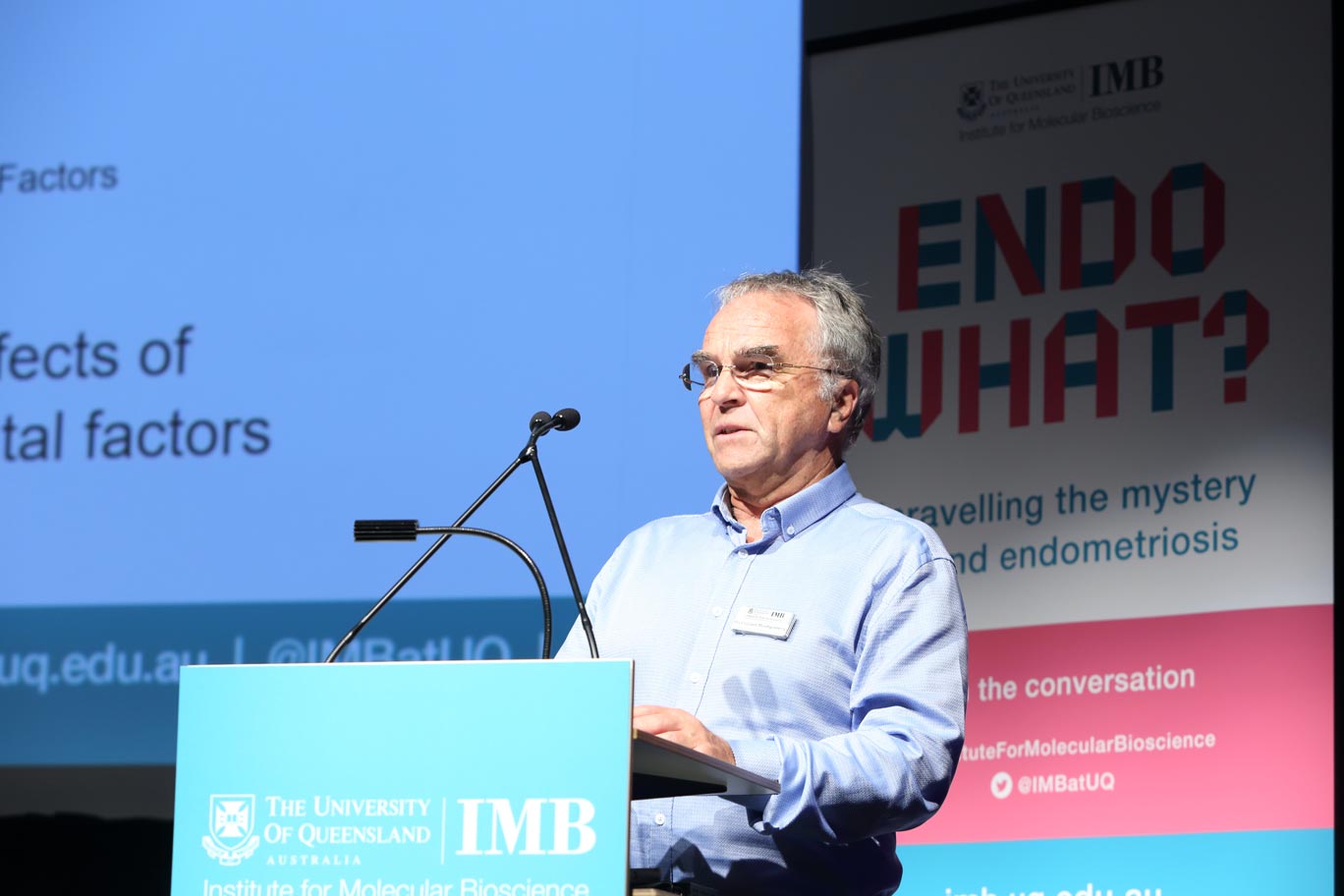Inside one in ten women an invasive disease is ravaging reproductive and surrounding organs.
 With this disease tissue similar to the normal uterine lining grows and invades the areas around the pelvis. It creates rigid scar tissue that impedes the function of the organs by reducing their mobility. It causes serious pain and in some cases, infertility.
With this disease tissue similar to the normal uterine lining grows and invades the areas around the pelvis. It creates rigid scar tissue that impedes the function of the organs by reducing their mobility. It causes serious pain and in some cases, infertility.
If you know ten women, there is a good chance that one of them is suffering from this insidious disease and they may not even know it. It’s called endometriosis and we know very little about it.
But we do know this:
- The disease is strongly influenced by genetic factors, so women with a family history are more likely to develop the disease
- 50% of the risk factors are genetic
- 50% of the risk factors are environmental
- There is a delay in diagnosis of around 8 years from when symptoms start
- To effectively diagnose the disease, women need to go through an invasive surgical procedure where tissue is extracted to be examined under a microscope
- Current treatment is only effective for some
- The disease presents differently in different people
- It affects women during their most productive years – after puberty and before menopause
- It is estimated to cost $6 billion annually in Australia

Like many complex diseases, the contributing environmental and genetic risk factors are like a giant jigsaw puzzle.
Twenty-five years ago a project commenced to try and understand what the genetic component of that jigsaw puzzle was. With a background in reproductive biology and gene mapping, Professor Grant Montgomery was drawn to the project, which he now leads.
“The genetic contribution to complex diseases is made up of lots of genes of small effect. It is not one gene mutation that causes the disease, but multiple genetic variations that contribute to incrementally increasing risk,” said Professor Montgomery.
“Somewhere along the continuum of genetic and environmental risk factors, there is a threshold that you cross where the disease presents.
“Also some women have very mild disease, while others have quite severe disease, and treatment is effective some but not others. So we want to understand: across the spectrum of the disease is it a continuum with the same risk factors or are there different types of disease?”
Uncovering what each of those factors is will open the door to effective prevention, diagnosis and targeted treatment, but it is a slow process.
Uncovering the Genetic Risk Factors – the long game
Professor Montgomery’s research team measures genetic markers from across the genome to determine the genetic regions associated with risk.
“Uncovering these regions is the first step in a process. Genetic markers tell us which genomic regions we need to look at, but in each of those regions there are a number of genes that could be the culprits (or targets).
“So the important next step is to go through the genomic regions to uncover specifically which genes in that area are influencing risk and how.”
Watch Professor Montgomery discuss his research in the video below from our March 2017 public lecture 'EndoWhat? Unravelling the mystery behind endometriosis'.
There are now 11 reported areas of the genome associated with endometriosis. A recent international study, led by Professor Montgomery’s research team, confirmed 9 of those areas and uncovered 5 new regions.
It was the largest study ever completed (200,000 women from around the world) drawing on data from research groups across the globe. This study follows similar smaller studies of European and Japanese women.
Professor Montgomery’s research team has also recently published an example of taking one of those regions and uncovering what the likely targets within it are.
“It’s at an exciting stage. We have a number of regions to work on and we know how to go about identifying gene targets. Hopefully it will also redirect the research being done in other labs in this area.
“It’s a difficult problem, and we are still a long way off identifying all the pieces of the puzzle, but we are making progress and it’s going to come together. It’s slow progress but it’s real progress.
“It’s unlikely that we will complete this puzzle for current sufferers, but I’m hopeful that we can help their daughters.”
Understanding the other 50% - the environmental factors
How do you identify every environmental influence on a person’s development? It’s a vital piece of the puzzle because while you can’t change genetics, you can influence environmental factors. Researchers need to find better methods to shine a light on the offending environmental effects.
“The environmental factors are really hard to study because we don’t know what they are or when the environmental triggers occurred. We’d have to track women from conception to understand any input that might be a factor,” said Professor Montgomery.
But, Professor Montgomery may have a solution.
“I believe there is potential to use similar processes to those that have been successful in uncovering the genetic factors, to identify the environmental factors.”
Our interaction with environmental factors can leave information in our DNA.
“Some environmental things will leave signatures (epigenetic signals) on the DNA. So the information may be there. If it is, we can work backwards – finding the signatures and then designing experiments to determine what caused them.
“It’s not going to be easy, and like genetic approaches, there are no shortcuts. You need to be working on things that you know will achieve outcomes – and we have proven that our genetic methods are successful.”
If this methodology works, it will pioneer a method for exploring many common diseases, all of which have a combination of genetic and environmental risk factors.
Donate to endometriosis research



